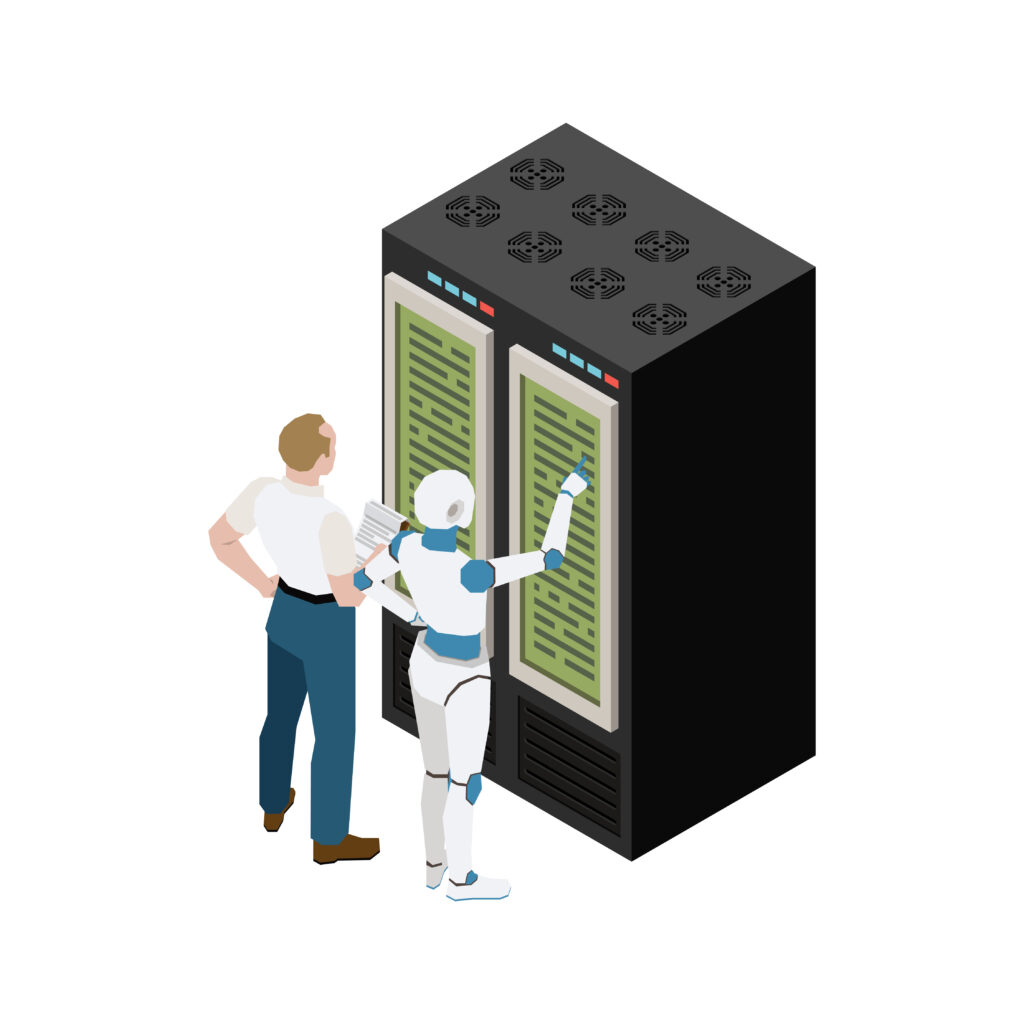Introduction
The background of this transformation rests in the Data Centers, which are becoming the cognizant of change that Artificial Intelligence (AI) is triggering all around the world. Strategic planning, appropriate infrastructure, investment, and other factors are required for building AI data centers. This guide assists you with the components to consider while creating an AI data center. If you learn more about AI technology read our article.
Why AI Data Centers Are Important
With increased use of AI applications by businesses, there has been a tremendous rise in demand for advanced AI data centers capable of handling enormous quantities of data. The nature of work AI data centers performs calls for super computing, high-density storage space, and low-energy-consumption frameworks. A lot of carefully thought out decision processes are involved while building AI data centers; therefore, it is important to have a clear understanding of its fundamentals.

Key Considerations for Building an AI Data Center
1. Choosing the Right Location
It is very important to select the right location of your AI Data Center, following factors should be considered;
- Climate Conditions: area where climate naturally cool, reduce the cooling cost.
- Proximity to Users: It helps to reduce the latency and improve the performance of the Data Center.
- Power Supply: more powerful supply build availability of reliable and renewable energy source.
- Disaster Risks: AI Data Center should be far away from disaster areas so protection risk could be measured.
2. Infrastructure Requirements
AI data Center requires specialized infrastructure to solve the complex AI workload efficiently. Following point should keep in mind while building infrastructure;
- High-Performance Computing (HPC): AI data Center need powerful processor and RAM such as GPU and TPU’s
- Scalability: Infrastructure must be updated so future growth can be analyze
- Networking: strong network can reduce the latency and improve the efficiency of AI data Center.
3. Cooling Systems and Energy Efficiency
AI Data Centre generates heat therefore, the system requires a cool environment so they can maintain optimal performance and continue their work smoothly.
- Liquid Cooling: Liquid cooling is better than traditional cooling system which fulfill the requirement of AI Data Centre
- Renewable Energy Sources: latest energy resource like wind power and Solar energy can reduce the cost
- Smart Cooling Technologies: AI driven cooling systems optimize energy systems that reduce the wastage of cooling.
4. Data Storage Solutions
AI Data Centre required high storage capacity to store large amount of data it also important for training datasets and model deployment;
- High-Speed SSDs: High speed SSD reduce latency and improve access to data.
- Cloud Storage Integration: Hybrid cloud solution provides more flexibility and security.
- Data Management Tools: different tools to manage the data efficiently and easy to access.
5. Security and Compliance
Protecting AI Data Centre from internal and external threat is more essential, therefore it need security;
- Multi-Layered Security: AI Data Centre required Firewalls, intrusion detection, and encryption for viruses
- Regulatory Compliance: AI Data Centre must follow GDPR, HIPAA, or other industry regulations.
- Regular Security Audits: AI Data Centre should conduct security audits to identify vulnerabilities and implement necessary fixes.
Guideline to Build an AI Data Center
Step 1: Define your requirement
Before setting up the AI Data Centre, first you need to make feasibility report regarding requirement of AI Data Centre i.e
- How much storage need to operate AI Data Center
- How much processing power required to maintain the operation of AI Data Center
- Must identify scalability.
Step 2: Plan Your Infrastructure
If you want to create a blueprint of your AI Data Centre, you need to check the space requirement, networking component and power supply.
Step 3: Invest in the Right Hardware
AI Data Centre demand updated as well as specialized hardware technology so system can work smoothly, so you need to invest in;
- GPUs and TPUs: These are best for AI Processing tools that increase the speed of system
- High-Speed Storage: SSD and NMVs fulfill the requirement of high speed storage.
- Robust Networking Equipment: It reduce the bottlenecks and enhance the performance of system so system respond quickly.
Step 4: Implement Cooling and Power Management
Management should focus on cooling and power efficiency that play a vital role in operational activity and improve the performance;
- Renewable Energy: It reduce the carbon footprint as well as cost of electricity
- Deploy AI-Powered Cooling system: AI cooling system enhance the energy consumption.
Step 5: Ensure Security and Compliance
It is very important to look after the security of systems, security measurement must be taken to protect the data.
- Firewalls and Intrusion Detection Systems must be installed.
- Encrypt Data at Rest and in Transit.
- Security Protocols Regularly Update.
Step 6: Monitor and Optimize Performance
This is never ending face of system, AI Data Centre must be monitor on regular bases which enhance the reliability of system.
- AI-Based Monitoring Tools: These tools detect issues before they impact performance of system.
- Automated Load Balancing: These tools enhance processing efficiency.
Future Trends in AI Data Centers
Edge Computing Integration for AI Data Center:
Real time decision making and processing that aligns results is done by Artificial Intelligence. Data centers have shifted towards incorporating Edge computing. This technique processes data in a decentralized manner by bringing computation closer to the data source, whether it is for mobile users, IoT devices, or autonomous systems.
Quantum Computing for AI Data Center:
In the future, quantum computing will revolution how data centers manage complex AI workloads.
AI-Driven Automation:
With increased energy needs and operational intricacy, data center management has started relying on AI powered automation. Enhanced machine learning algorithms help in monitoring, predicting, and responding to changes in workloads in real-time.
Final Thoughts
Optimized infrastructure, alignment with newest technologies, and following best practices are few of the most essential components that should be considered when building AI data centers. Although it takes time and diligence, the outcome makes it a worthwhile investment.




The demand for AI data centers is growing rapidly as businesses increasingly rely on AI applications. Building these centers requires careful planning, considering factors like location, infrastructure, and security. Efficient cooling and power management are crucial for maintaining optimal performance. Regular monitoring enhances reliability and ensures smooth operations. How can businesses ensure long-term scalability and adaptability of their AI data centers?
The growing reliance on AI applications by businesses has significantly increased the need for advanced AI data centers. These centers require specialized infrastructure, including supercomputing capabilities, high-density storage, and energy-efficient solutions. Cooling systems are crucial to maintain optimal performance, as data centers generate substantial heat. Security measures are essential to protect against both internal and external threats.
How can businesses ensure that their AI data centers remain scalable and adaptable to future technological advancements?